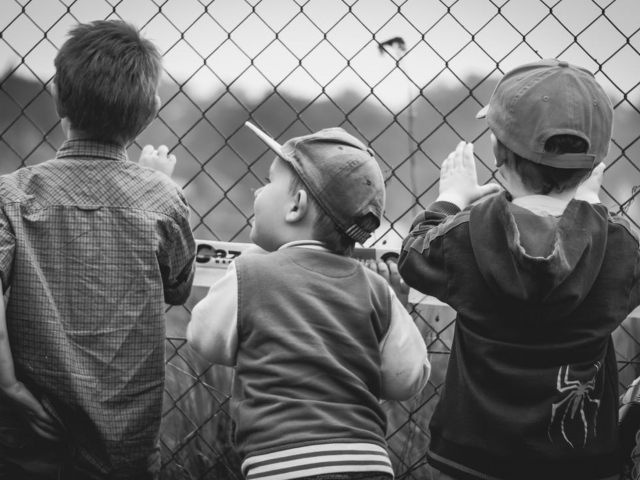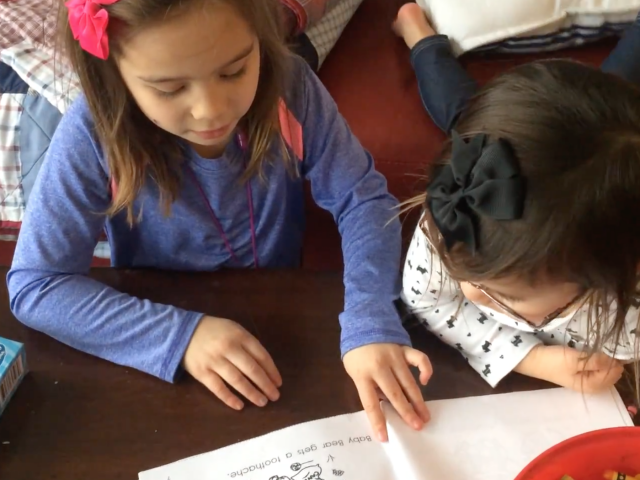(Image provided by PlayTheTunes)
Anyone who’s been a parent to at least two verbal children will tell you that if you haven’t seen your kids fight, you soon will.
So what should we do when they fight? How much should we involve ourselves, if at all?
Does any intervention help? Make it worse?
It helps, at least, to identify what many of us do when our kids fight.
Two Most Common Ways That Parents Respond to Kids Fighting
-
We stay out it
-
We tell them to work it out themselves
So why do we distance ourselves from it?
For one, once we involve ourselves then we can never escape the role of referee.
And if there always needs to be a referee, it will stunt their ability to develop conflict problem-solving skills as adults.
That’s not to say we don’t intervene at all, but there are helpful ways (and likewise non-helpful ways) to do it.
And trust me, you don’t want to deprive your children of important problem-solving skills. (see viral Lawnmower Parents article)
This begs the next obvious thought.
Why Do Siblings Even Fight in the First Place?
Common reasons that the book mentions and some I threw in includes:
- They fight over property
- They fight over territory
- They’re mad at themselves and take it out on a sibling
- They’re mad at someone else and take it out on a sibling
- They’re upset by something (bad day at school, consequence, etc.)
- They’re hangry
- They have nothing better to do (we all know people including adults who stir things up out of boredom, don’t we?)
If your reason isn’t covered in there, I’m sure there are at least a million other reasons beyond the ones listed.
And if there’s any reason to fight, kids will find it.
To help understand, I’m going to actually use the exact book example because I know MANY of us can relate to this VERY SPECIFIC example.
Believable Example of Sharing Toys
The Scene: It’s a rainy day and the 8-year-old big brother is looking for something to do. Suddenly he spots his old blocks and toy animals. Even though most of the things are meant for “little kids”, he has a great idea to create a zoo, possibly a jungle for the monkeys, a pool for the seal, etc.
He starts right away to playing and begins to construct his imaginary zoo.
As he’s playing, the bored kid sister comes up and says, “I want to play, too!”
Brother: No, I’m making a zoo and I want to do it by myself.
Sister: (Grabbing zebra and two blocks) I can play if I want to!
Brother: No you can’t, give it back!
Sister: Yes I can, it’s mine!
Brother: I had it first!
Sister: I can have it to, though! Daddy bought it for me.
Brother: (Grabbing her hand and forcing her fingers to open) Give it back!!!
Sister: Ouch! You hurt me!
Brother: Give it back right now!!
Sister: (Crying) Mommy, he’s hurting me!!!
What Happens Next
The sister is crying now and Mom has involuntarily been brought into the altercation. There are a few ways that most of us would respond. Here are the most common:
- Tell them to stop fighting.
- Take the toys away and send them both to their rooms.
- Try to come up with a truce where they can play together.
- Figure out who started it and decide a verdict from there.
- Side with the Brother who had it first.
- Side with the Sister because the toys are more age-appropriate for her.
But there’s a problem with many of these approaches, see the illustrations here:
Very rarely will you deliver a verdict that is satisfying to both parties.
Here’s the thing.
I know many of you are thinking that the Sister “started it” and therefore it would be just if she did feel the wrath of the consequence. I wouldn’t disagree, however, the goal of our parenting is to help our kids get along. There’s a better way that is sure to leave good feelings all around.
How to Intervene Helpfully When Our Kids Fight
- Start by acknowledging the children’s feelings toward each other or in the situation. Using our example above it might sound like this:
“So this was your idea to build a zoo and you wanted to do it all by yourself.”
“But when you saw him playing, you wanted to play too.”
This falls right in line with Ch. 1 from the How to Talk book about acknowledging feelings.
2. Listen to each child’s side with respect.
You’re giving each kid an opportunity to thoughtfully explain what they want or need from the situation. Feeling like you’re being heard if a very powerful tool.
3. Show appreciation for the difficulty of the problem.
“Hmm, this seems like a tough situation especially when you both want to play with the exact same thing.”
4. Express faith in their ability to work out a mutually agreeable solution.
“Though this is tough, I bet you can work out a solution that works for both of you. It may require some compromise, but I know you can do it!”
If they’re truly stuck on what to do next, you can suggest some options. But again, try to keep your involvement minimal.
5. Leave the room.
This is so they don’t follow you and corner you into being a referee.
Practicing these steps can be very awkward and it seems tedious, but I PINKY PROMISE you over time that it will get easier. Eventually, they’ll stop needing your intervention and when confronted with a difficult situation, immediately began to work on a compromise themselves.
Trust me. I’ve seen it with my own eyes!
What If There is Physical Violence?
The previous steps assume everyone is maybe agitated, but still somewhat logical.
Sometimes that’s not the case. Sometimes they’re holding a heavy object that could inflict serious harm on their sibling. When there is the threat of physical or verbal abuse, then a parent needs to intervene.
The steps for this are to describe the situation (using the same volume as the kids), establish limits, and separate them.
It might sound like this:
“I see one boy on a chair about to throw a metal truck and another boy about to hit with a baseball bat! You two must be furious!
This is a very dangerous situation and we must have a cooling off period.
Quick! You to your room and you to yours!”
At some point when they’ve come down from their rage, you can safely resume the steps above.
The message you’re sending is there is no violence in this house while giving them skills to learn to step away in anger that they can take into adulthood.
Quick Takeaways From This Chapter
If you remember nothing else from this chapter, let it be these things:
- The goal of intervention isn’t to settle their argument to make a judgement, it’s to open blocked channels of communication so they can go back to dealing with each other. (And be empowered to do so)
- At our earliest possible moment, we want to turn the issue back on the children so they can resolve it themselves.
- Don’t do forced sharing (I’m totally guilty of this) because it undermines goodwill- which is the whole point of sharing.
- Verbal children do have the capacity and creativity to come up with solutions that work for everyone. We, as parents, should not deprive them of the opportunity to learn this very important life skill.
Your kids will fight. My kids will fight.
How that affects their relationship with each other as they grow up really falls on us parents- to teach it and model it well.







